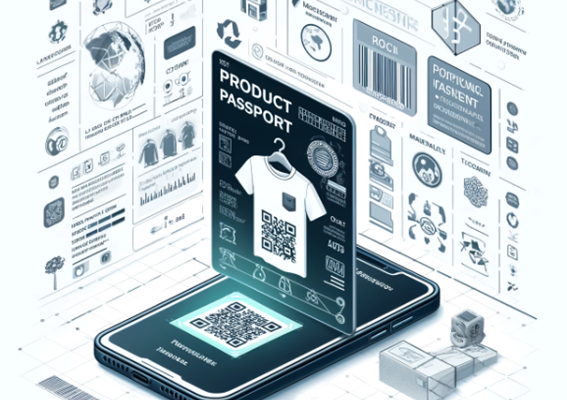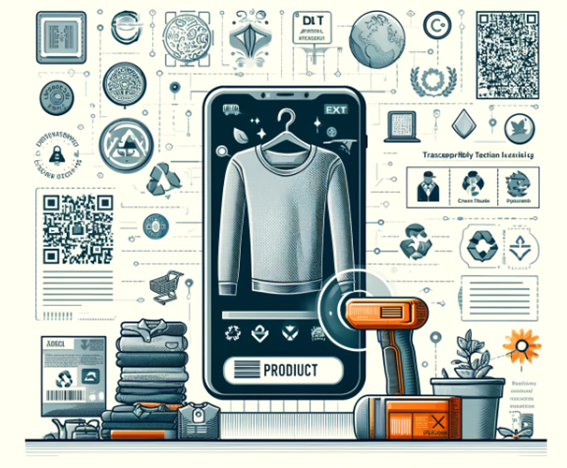

Leveraging Innovative Technology to Drive Sustainability in Fashion
In the constantly evolving fashion industry, technology and innovation are critical, reshaping everything from the design production and consumer shopping experiences. As the industry is under increasing pressure to address environmental and ethical concerns, cutting-edge technologies such as digital design, blockchain, and 3D printing are transforming the landscape, allowing companies to satisfy current market expectations and work toward a more sustainable future.
From the inception of the sewing machine to today's digital innovations, technology has always been a transformative force in the fashion industry. It continues to redefine the boundaries of how garments are designed, produced, distributed, and consumed. In today’s world, designers are able to be creative, and integrate digital functionalities like music playback and heart rate monitoring directly into clothing, expanding the utility and life cycle of garments. Social media platforms continue to redefine fashion branding and consumer engagement, influencing purchasing habits and fashion trends in real-time.

Picture source: AI-generated
A major focus within this technological revolution is the reduction of waste and the enhancement of ethical production practices. For example, the adoption of recycled materials is becoming common, with brands using discarded plastic bottles and old garments to create new fabrics, thus conserving resources and reducing landfill waste. Biodegradable fibers like Tencel and hemp provide eco-friendly alternatives to traditional materials, while lab-grown textiles and waterless dyeing technologies reduce water usage and chemical discharge.
The fashion industry is under pressure from the market to adopt sustainable and ethical manufacturing and utilisation practices, and that’s where technology steps up to assist. A transformative technology in ensuring transparency within the fashion supply chain is blockchain. This technology creates tamper-proof records of a garment’s journey from raw materials to finished product, enhancing consumer trust by ensuring products are ethically produced and sourced. Powered by blockchain, digital product passports (DPPs) are emerging as essential tools for sustainability and traceability. These passports provide detailed information about a product’s origin, materials, manufacturing process, and recycling options, allowing consumers to make informed choices based on sustainability credentials.
Digital solutions like CAD software are revolutionising the design process by enabling precision and efficiency. This technology allows designers to create and modify their designs digitally, significantly reducing the time and resources needed for developing physical samples.
Virtual reality (VR) is enhancing the way consumers interact with fashion brands by providing immersive shopping experiences. Through virtual reality software and hardware, customers can try on clothes virtually, experience fashion shows from their homes, and explore stores without physically being there. For designers and manufacturers, VR offers powerful visualisation tools that enhance the creative process.
3D-printing and digital fabrication are pivotal in implementing sustainability within the fashion production. These technologies enable the creation of detailed and complex designs while minimising material waste. Designers can produce exactly what is needed, tailor specifications to individual consumers, and innovate with materials that are often difficult to work with in traditional manufacturing processes.
Artificial Intelligence (AI) is changing how the fashion industry anticipates and reacts to changing fashion trends. By analysing large datasets on consumer behaviour, purchase patterns, and even global fashion trends, AI helps brands predict what will be popular with high accuracy.
Looking forward, the intersection of technology and fashion holds very promising potential, where sustainability is no longer aspirational but achievable. The advances in smart textiles, blockchain for transparency, digital fabrication, and artificial intelligence are not just reshaping how we create and consume fashion; they create a more circular and sustainable fashion sector. These innovations ensure that the fashion industry can meet today's ethical and environmental standards, proving that high-tech solutions foster a deeper connection between sustainability and fashion. The industry can maintain its commitment to sustainability and make sure that fashion is as beneficial to the environment as it is to humankind by pushing forward with technological advances.

Με τη χρηματοδότηση της Ευρωπαϊκής Ένωσης. Οι απόψεις και οι γνώμες που διατυπώνονται εκφράζουν αποκλειστικά τις απόψεις των συντακτών και δεν αντιπροσωπεύουν κατ'ανάγκη τις απόψεις της Ευρωπαϊκής Ένωσης ή του Ευρωπαϊκού Εκτελεστικού Οργανισμού Εκπαίδευσης και Πολιτισμού (EACEA). Η Ευρωπαϊκή Ένωση και ο EACEA δεν μπορούν να θεωρηθούν υπεύθυνοι για τις εκφραζόμενες απόψεις.
